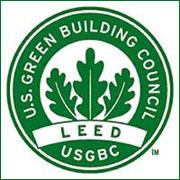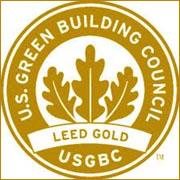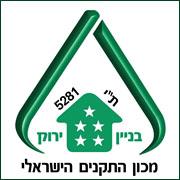American Green Building Certification (LEED)
LEED (Leadership in Energy and Environmental Design) is the most renowned green building certification in the world.



Check these Green Building Information Gateway (green buildings around the world) links:
LEED (Leadership in Energy and Environmental Design) is the leading and most recognized green building certification in the world. It was drafted by the US Green Building Council, and its first version was launched in 1998. Several updated versions have been introduced since, adapted to varied types of buildings, difference sectors – such as private or commercial building, educational institutions etc., and specific projects – such as laboratories and interiors. Versions of LEED were also developed for neighborhood development and for the maintenance and operation of existing buildings. The latest version, published in 2009, is LEED 2009 for New Construction and Major Renovations.
LEED has five major categories addressing different aspects of green building:
- Sustainable Sites
- Water Efficiency
- Energy and Atmosphere
- Materials and Resources
- Indoor Environmental Quality.
Each category has a defined weight in the overall rating. The greatest impact (35%) is that of 'energy and atmosphere', which includes items such as energy efficiency, using renewable energies, consuming energies from non-polluting sources, as well as testing and optimizing the various systems prior to-, and during the first year of habitation. Next is the 'sustainable sites' category (26%), which addresses the location, access to low-polluting transportation, managing runoff, minimizing the urban heat island (UHI) etc. Other categories deal with issues such as: water efficiency, use of recycled material to minimize resource consumption during construction, managing building waste, and the quality of interiors that impacts the health and welfare of users.
Bonus points are granted for issues which are not covered by the defined categories, via the special Innovation in Design/Operations category. This enables each project to test original building methodologies and technologies, or any other pioneering action which might benefit the environment and people.
Rating
The LEED certification is based of a 100 point rating, with a 10 point bonus for innovation of regional significance of the project. The final rating is determined in accordance with the following calculation:
| Rating | Score |
| Certified | 40-49 |
| Silver | 50-59 |
| Gold | 60-79 |
| Platinum | 80+ |
Preconditions
Any project seeking LEED certification is required to meet obligatory preconditions. These are identical to all projects, and ensure basic measures were applied to minimize damage to the environment, regardless of the final score.



